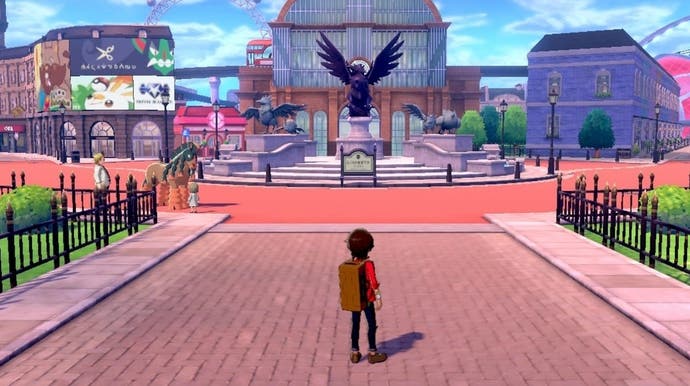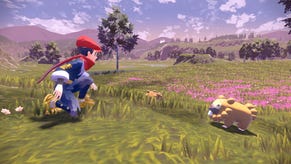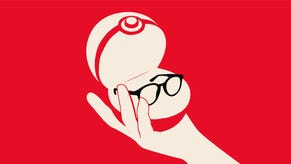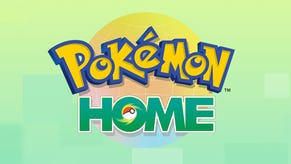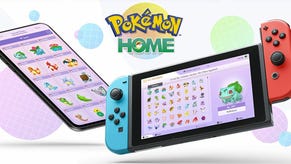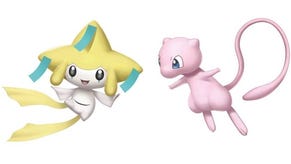What Pok¨Śmon Sword and Shield could learn from the Pok¨Śmon Trading Card Game
Dream teams.
Hello! To celebrate the launch of Dicebreaker, a glorious place to read about the pleasures of board gaming, table-top and all that jazz, here's a piece from the editor-in-chief Matt Jarvis.
Interaction sits at the heart of Pokémon's world. It has done since Red and Green had thousands of us pushing a truck near the S.S. Anne in search of legendary #151, Mew. After all, you'd discovered valuable items in bins, received powerful new moves by talking to random strangers and ventured into new areas by cutting trees, lighting caves, tearing down posters and surfing stretches of water. The Mew truck myth was believable enough to try because it was just another plausible interaction in a game full of them.
A lack of interaction is a major factor in the inescapable feeling of disappointment around Pokémon Sword and Shield. As Chris Tapsell notes in Eurogamer's review, the new British-inspired region of Galar too often feels like a pantomime backdrop rather than a rich world filled with ways to interact with its environment and inhabitants - both human and Pokémon. For all the discussion and controversy around reducing the number of Pokémon to allow for more detailed animation, Sword and Shield's battles still largely lack a feeling of proper interaction between Pokémon and the environments they live in. At worst, it feels like things haven't moved especially far from the rudimentary hopping and flashing sprites of the Game Boy.
Even Sword and Shield's new Dynamax battles feel strangely disconnected, with the co-op nature of the multiplayer raids wasted on an otherwise standard exchanging of blows that just happens to involve a Honey, I Blew Up The Pokémon spectacle. There's no opportunity for players to truly feel like they're teaming up, or that their Pokémon are working together beyond happening to share the same empty void.
What's especially frustrating is Sword and Shield didn't need to look far for a new way to bring a better sense of interaction to battles.
The Pokémon Trading Card Game and the video games have a mostly symbiotic relationship. Each new video game instalment is followed by a matching set for the TCG, bringing the latest changes across to the tabletop, such as Pokémon Sun and Moon's powerful Z-Move attacks - rechristened as GX attacks in the TCG, devastating moves that could only be used once per game. (The Sword & Shield expansion will introduce VMAX cards featuring the super-sized Dynamax and Gigantamax Pokémon next February.) Sometimes, the TCG leads the way - Poké-Powers and Poké-Bodies existed in the card game before finding their way into the video games as Pokémon Abilities.
Last year, the Pokémon TCG introduced Tag Team-GX cards. Part of the Sun & Moon - Team Up expansion, the cards featured two or three Pokémon on a single card, giving them a GX attack that saw the Pokémon team unleash their combined power. Reshiram and Charizard's Double Blaze enabled a brutal fire attack unable to be resisted by card effects, while Celebi and Venusaur's Evergreen would completely heal the Pokémon alongside causing major damage.
The effects were powerful, but also introduced interesting ways to play around with the card game's largely faithful recreation of the video games' battles - along with some effects that were only possible on the tabletop. For instance, Mew and Mewtwo's Genesis Beam could return three of your opponent's Pokémon to earlier stages of evolution, an exciting reversal of the way Pokémon could evolve from basic to advanced in the course of a single match.
Not unlike Sword and Shield's Galarian variations of fan-favourite Pokémon, like the chimney-top-hatted and moustachioed Wheezing and Viking-flavoured Meowth evolution Perrserker, Tag Team-GX cards also allowed for fun new spins on familiar Pokémon without just inflating the roster. If the cute penguin-like Piplup didn't seem much of a threat alone, paired with Blastoise it gained a new level of formidability. It became a way for Pokémon of the same or different elements to interact beyond simple super-effective strength or weakness, too; the Gengar and Mimikiyu's GX move Horror House doubled the ghostly pair's psychic power, while the triple threat tag team of Articuno, Moltres and Zapdos turned the previously opposed elements of the legendary birds into the fused Trinity Burn.
There are a number of factors that mean the Pokémon TCG's Tag Team-GX mechanic wouldn't be able to be simply dropped into Sword and Shield or future Pokémon video games. The number of Tag Team-GX cards is extremely limited and the Pokémon pairings are fixed compared to the innumerable possible combinations between players' Pokémon in the video games. Designing, illustrating and printing cards for the TCG is much less costly and time-intensive than the development required to code, model and animate Pokémon for a brand new video game. There are various other realistic considerations like this that mean it's unlikely we'll see a similar Tag Team ability in the video games any time soon.
But the Pokémon TCG's Tag Team-GX mechanic is just one demonstration of how static pieces of card can feel just as - if not more - alive than animated 3D models and flashy visuals, and continue the legacy of Pokémon's highly interactive world without any of the technical wizardry video games allow for. Sword and Shield lost some of that interaction, and it made for not only lesser video games but a move away from the central experience that made Pokémon such a phenomenon in the first place. Interaction like the kind you get in Tag Team-GX could take the series into a new era while staying true to the joy of seeing these creatures, world and characters come together that sits at Pokémon's heart.
